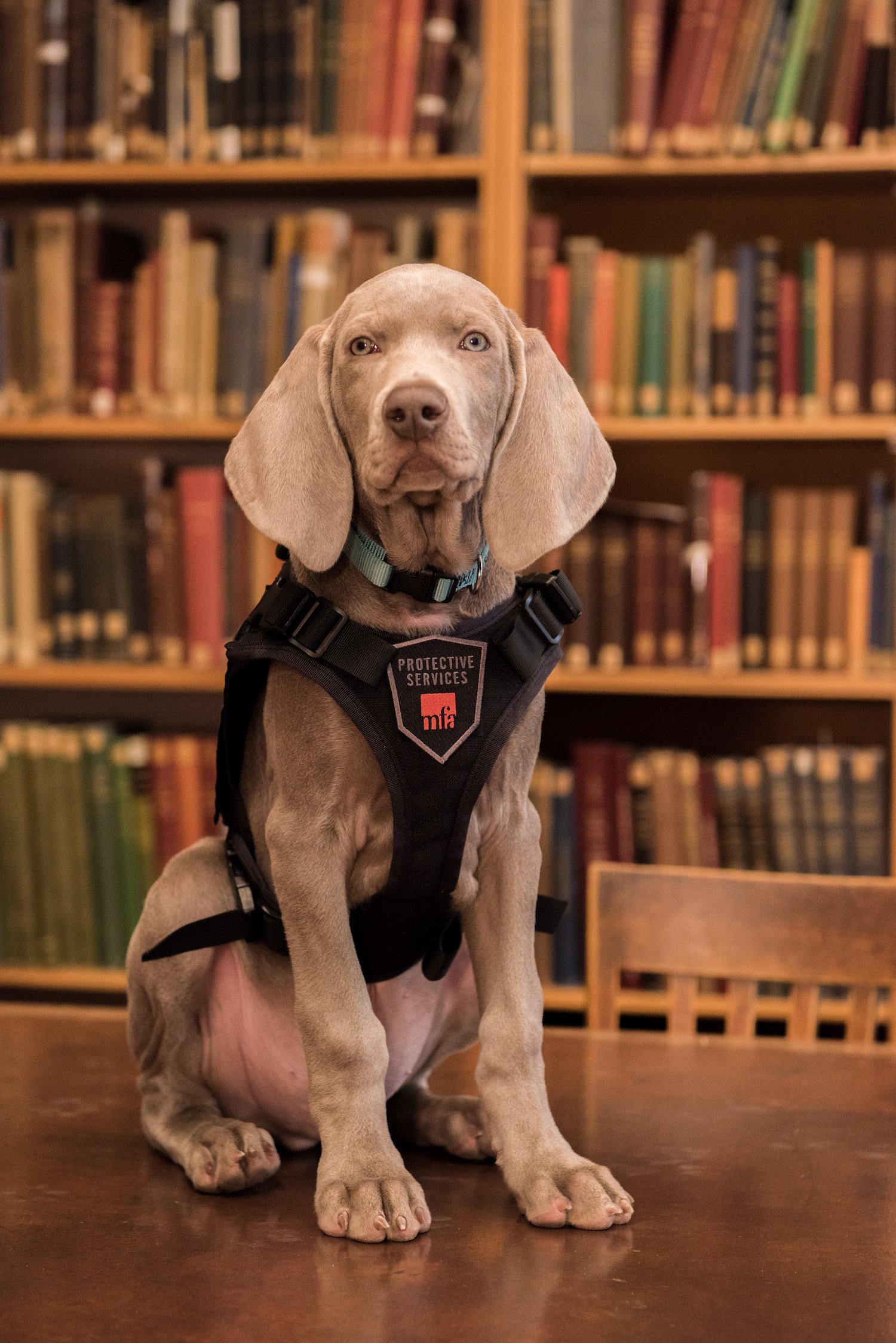
File this one under “news of the adorable”: The latest staff member at the Museum of Fine Arts, Boston, is Riley, a 12-week-old Weimaraner puppy. The institution hopes his impressive olfactory skills can be harnessed to detect insects and bugs, to prevent infestations that might threaten the preservation of museum objects.
Riley belongs to Nicki Luongo, the museum’s head of Protective Services and will work with the MFA on a volunteer basis, reports the Boston Globe. As part of a new pilot program, he’ll be trained to inspect museum objects, sitting down in front of them if he smells moths or other bugs, which can cause damage, especially to textile, wood, or other organic materials.
“Pests are an ongoing concern for museums,” Katie Getchell, chief brand officer and deputy director of the Museum of Fine Arts, told the Globe. “If it is something that works, it’s something that other museums, or other libraries, or other places that collect materials that are susceptible to any kind of infestation like that could use as another line of defense.”
As far as the MFA knows, it is the only institution to add the art-world equivalent of a bomb-sniffing dog to its protocols for keeping bugs in check. (Another new program, K-9 Artifact Finders, from the Penn Museum, Penn Vet Working Dog Center, and Red Arch Cultural Heritage Law and Policy Research, is currently training four dogs to help US customs officers sniff out ancient artifacts, in order to detect stolen and smuggled objects, reports the Daily Pennsylvanian.)
“We use an integrated pest management approach, which means that we do not use pesticides but rather address the symptoms that cause the presence of pests—including pests’ opportunity to enter and leave the building; their food source; and the climate conditions that support their ability to survive,” a representative of the museum told artnet News of existing protective efforts in an email.
“New objects entering the building carrying pests are the most common means of their introduction, and we make every attempt to quarantine, monitor and, if necessary, treat objects as they enter,” she added. “If Riley can be trained to detect the presence of pests either hidden from view or prior to their becoming established, he would be a wonderful addition to the tools available to us.”
As a Weimaraner, Riley is a good choice for the MFA. The American Kennel Club cites the breed’s “ability to work with great speed and endurance in the field,” while Weimaraner Rescue of the South notes that they are “very hardy, with a good sense of smell, and a passionate worker.”
Sadly, for museum-going art lovers, floppy-eared Riley, as cute as he is, will be working almost entirely behind the scenes, leaving little opportunity for interaction with visitors.
See more photos of Riley at work below.
Riley the bug-sniffing Weimaraner at the Museum of Fine Arts. Courtesy of the Museum of Fine Arts.
Riley the bug-sniffing Weimaraner at the Museum of Fine Arts. Courtesy of the Museum of Fine Arts.
Riley the bug-sniffing Weimaraner at the Museum of Fine Arts. Courtesy of the Museum of Fine Arts.
Riley the bug-sniffing Weimaraner at the Museum of Fine Arts. Courtesy of the Museum of Fine Arts.
Riley the bug-sniffing Weimaraner at the Museum of Fine Arts. Courtesy of the Museum of Fine Arts.
Riley the bug-sniffing Weimaraner at the Museum of Fine Arts. Courtesy of the Museum of Fine Arts.
Riley the bug-sniffing Weimaraner at the Museum of Fine Arts. Courtesy of the Museum of Fine Arts.